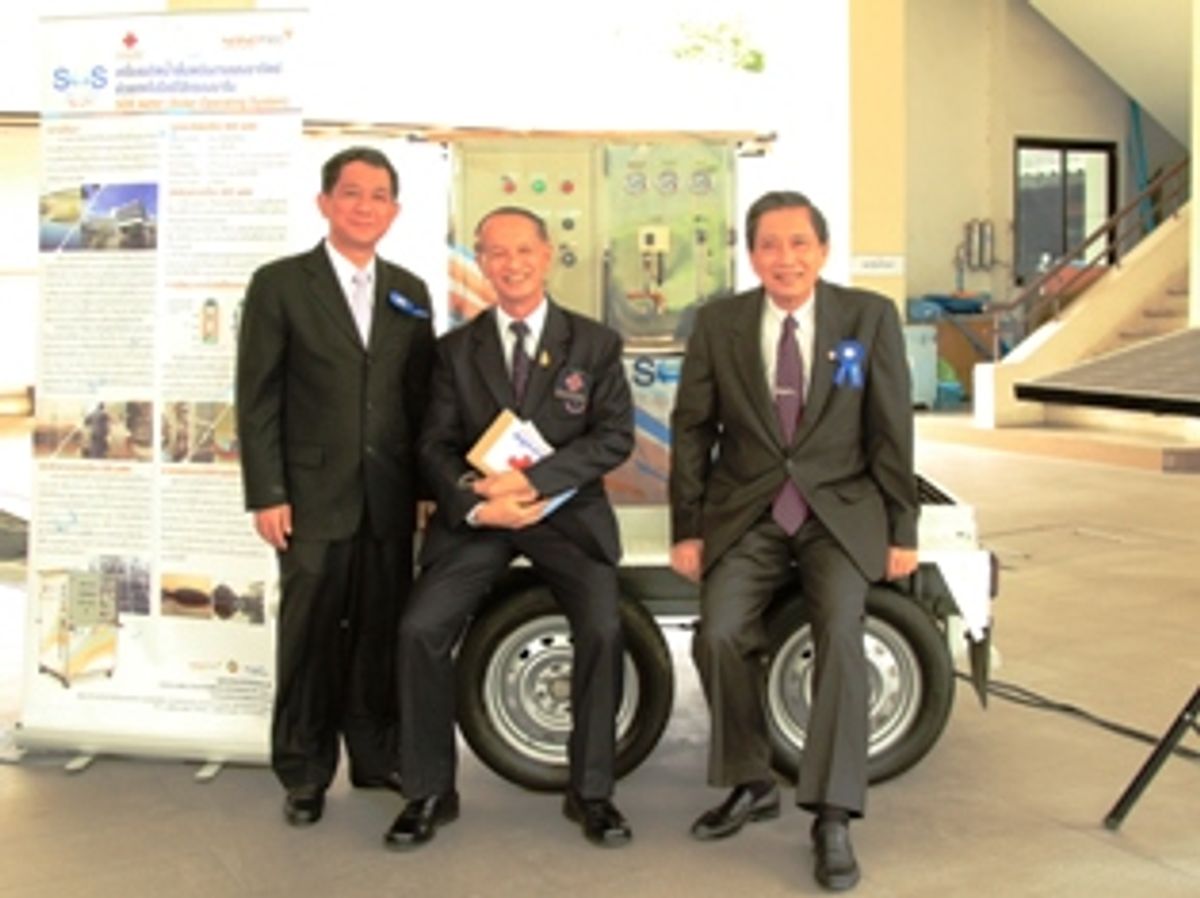This week the BBC covered some of the technologies that have been developed and are being planned to cope with the floods that have plagued Thailand in the past year. You will have to go to the link provided to see the video as the BBC has made it impossible to embed it.
Not all of the technologies described involve nanotechnology, but two of the most interesting do. Both were developed by the National Nanotechnology Center in Thailand (Nanotec).
Nanotec calls the second technology covered by the BBC video "n-SACK." It’s basically a material that absorbs water. As shown, it creates a better sandbag—better in a couple of ways: Before absorption, it's much smaller and lighter than a sandbag, and unlike one, it not only blocks floodwaters, it partially absorbs them.
Now, these nanotechnologies are not groundbreaking. Inexpensive water filtration systems that employ nanoparticles are nothing new, nor are water-philic materials. But it is the development of these technologies for an acute need that is interesting.
Specifically, the breakthrough here is that the Nanotec researchers were able to make a high-capacity water purifier portable and solar-based, on the one hand, and bringing the price down to $2 per "sandbag" in the other. Now that’s still twice as high as a typical sandbag, but these can be reused. And, if I might add, it’s much less labor intensive. With sand bags someone has to shovel that sand into the bags. With the n-SACK, you simply place the bag into the way of the flood and it fills itself up.
While much of nanotechnology research is devoted to far-off aspirations like ridding the world of artificial light—with the claimed aim of preventing starvation and thirst—sometimes just addressing the problems in front of you can significantly improve the world.
Also noteworthy is the pragmatism shown by the Thailand researchers when they opted to use silver nanoparticles in their portable water filtration system. Meanwhile Europe and the US seems to be in the midst of a “paralysis by analysis” in regulating the use of silver nanoparticles.
It's easy to imagine the victims of this year's Thailand floods weren’t too troubled by a lack of regulations governing the nanoparticles that allowed them to drink the only clean water they may have had access to for days. As I have said in the past: "The billions who eat, sleep, and live in what are virtually open sewers and who might like to have a cheap way of getting clean drinking water or bringing electricity into their homes seem to be lost in FoE (Friends of the Earth) self-righteousness.”
Dexter Johnson is a contributing editor at IEEE Spectrum, with a focus on nanotechnology.




